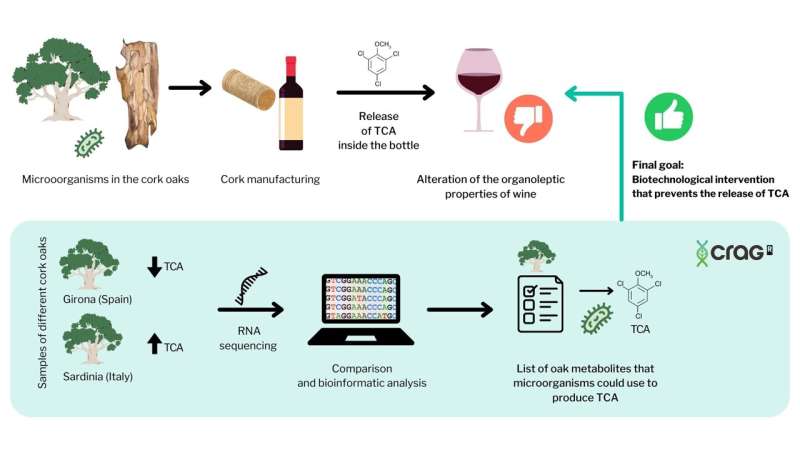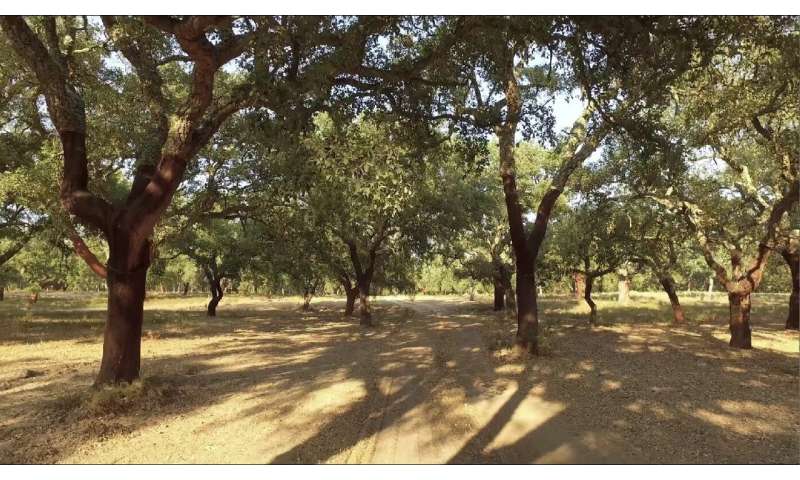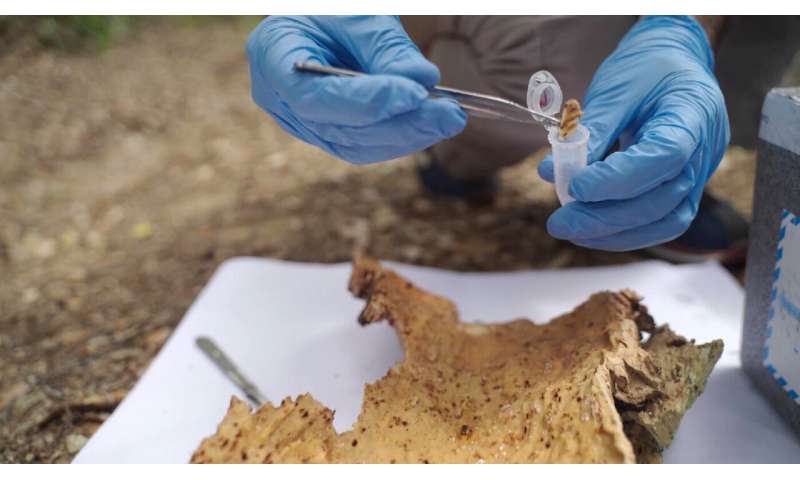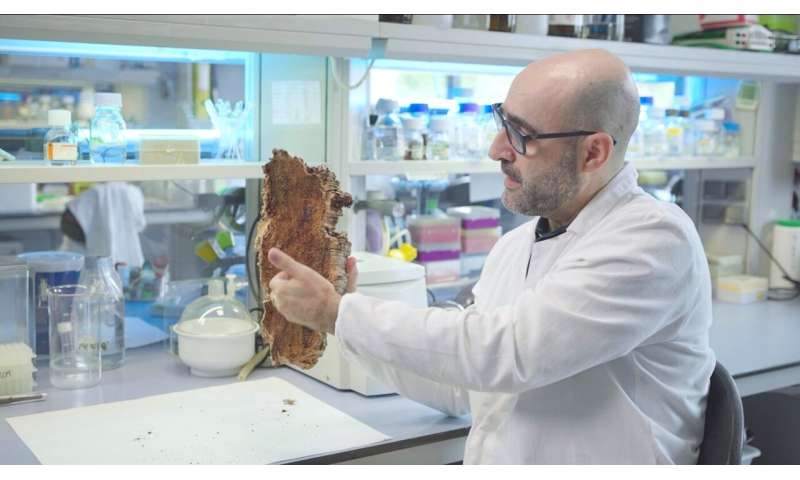This article has been reviewed according to Science X's editorial process and policies. Editors have highlighted the following attributes while ensuring the content's credibility:
fact-checked
proofread
Scientists and the cork industry work together to preserve wine quality

Spain produces 50% of the world's cork and 30% of all cork stoppers. Cork is a natural polymer which has been a crucial element used to seal bottles, being of great importance for the wine industry. However, a major challenge is the appearance of the "corked wine" aroma, caused by the presence of a compound called trichloroanisole or TCA in the stoppers. Due to its high volatility, TCA can migrate from the cork to the wine, adversely affecting its taste.
In this context, the CRAG research team lead by David Caparrós-Ruiz, head of the Bioengineering of Lignocellulosic Biomass group, participated in the Cork2Wine project, which is coordinated by the cork company Francisco Oller SA.
This project is aimed at identifying the origin of TCA and explore solutions to the "corked wine" aroma problem. Researchers at CRAG analyzed cork oak samples from Sardinia and Girona, two regions with different TCA levels in the cork. The comparison of gene activity, achieved through sequencing and comparing RNA molecules, followed by bioinformatics studies, allowed this group to identify a list of phenolic metabolites present in different abundances in the two cork tree populations.
"Obtaining this list of compounds has been the first step to understand the complete TCA metabolic pathway. This knowledge is essential for finding new solutions to this problem," says David Caparrós-Ruiz, leader of the research at CRAG.
-

Field of cork oaks Credit: CRAG -

Extraction of cork samples to be taken to the laboratory Credit: CRAG -

Dr. David Caparrós-Ruiz in his laboratory at CRAG showing which area of the bark the samples are taken from Credit: CRAG
While TCA is present in the cork, microorganisms are known to play a role in its production, which would use the oak's phenolic compounds identified in this project as precursors to produce TCA. Identifying these precursor compounds is crucial and opens the possibility to build new biotechnological tools aimed at reducing or eliminating TCA in cork.
"Cork companies are eager to engage in research, and we are delighted with this collaboration with CRAG," says Jordi Roselló, R&D head at Francisco Oller SA.
The Cork2Wine project was a consortium uniting various stakeholders in the cork sector, including companies, wineries, oak farms, a chemical sector company, and research groups. It lasted four years (from 2019 to 2023). The project served as the starting point for this public-private collaboration, which now continues thanks to a new research project awarded within the framework of the Recovery, Transformation, and Resilience Plan with Next Generation funds.
The Cork2Wine project exemplifies how public-private partnerships can translate fundamental research into societal benefits, demonstrating the impact of knowledge generated in the research system on citizens.
Provided by Center for Research in Agricultural Genomics (CRAG)




















